Exit Interview: I Was a Black, Female Thru-Hiker on the Appalachian Trail
On joining an exclusive group that’s 75 percent male and overwhelmingly white.
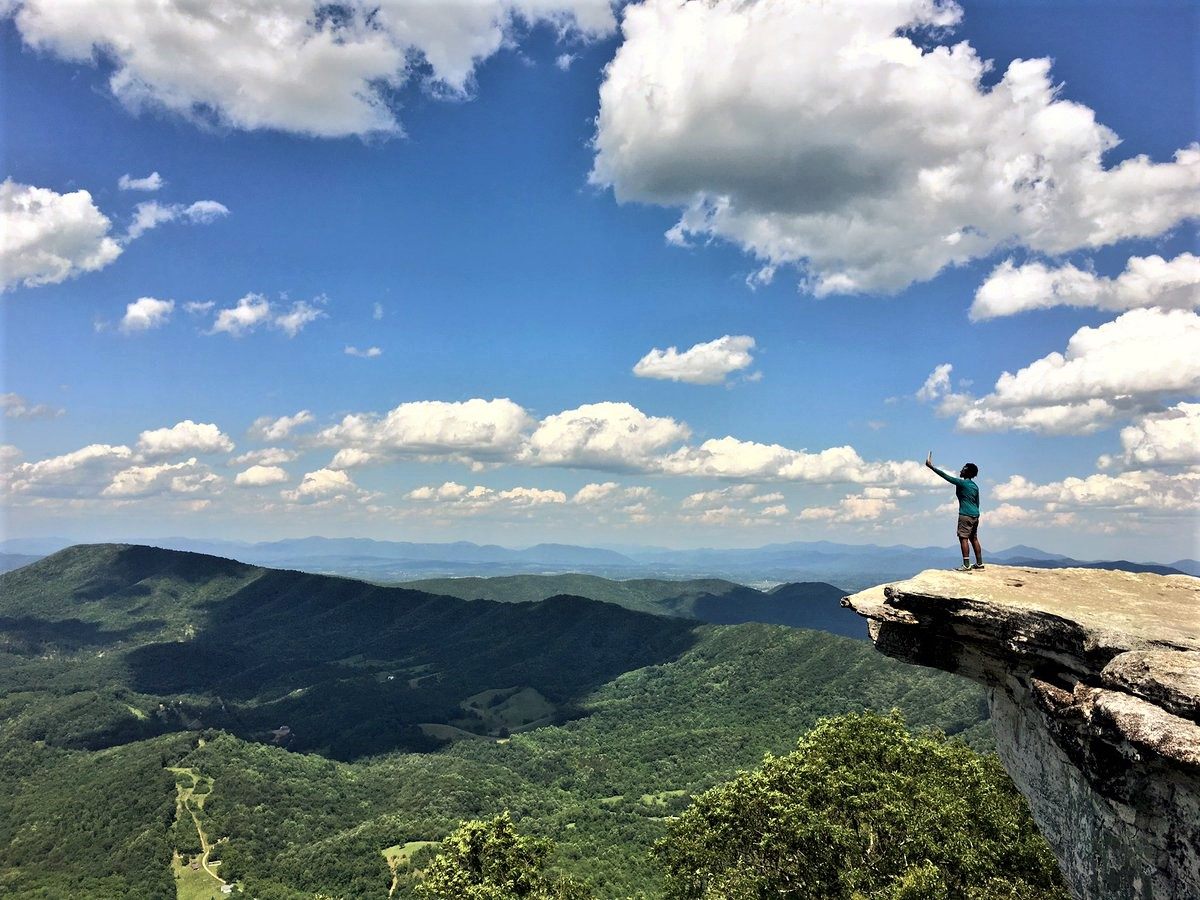
The first person to hike the full length of the Appalachian Trail, a white man named Earl V. Shaffer, wanted to “walk the Army out of his system.” That was in 1948. Since the 1970s, when 775 hikers completed the trail, the number of “thru-hikers” has doubled each decade so that in the 2000s, close to 6,000 hikers covered all 2,190 miles.
Most of those people still look like Shaffer—they’re white men. Only about a quarter of thru-hikers are women, according to the Appalachian Trail Conservancy, and though there’s little information about the racial breakdown of thru-hikers, it’s safe to say that the vast majority of them are white.
Last year, Rahawa Haile, a writer now based in Oakland, California, became one of the very few black women to attempt to hike the entire trail. (She was able to find exactly one other attempting the feat in 2016.) In March, she began in Georgia, the more popular end of the trail to start on, and by the middle of October had hiked its entire length. She carried along with her, too, a series of books by black authors, which she left in trail shelters along the way.
Haile spoke to Atlas Obscura about the challenges and joys of hiking all those miles and the particular experience of being one of the few people of color spending months on the trail.
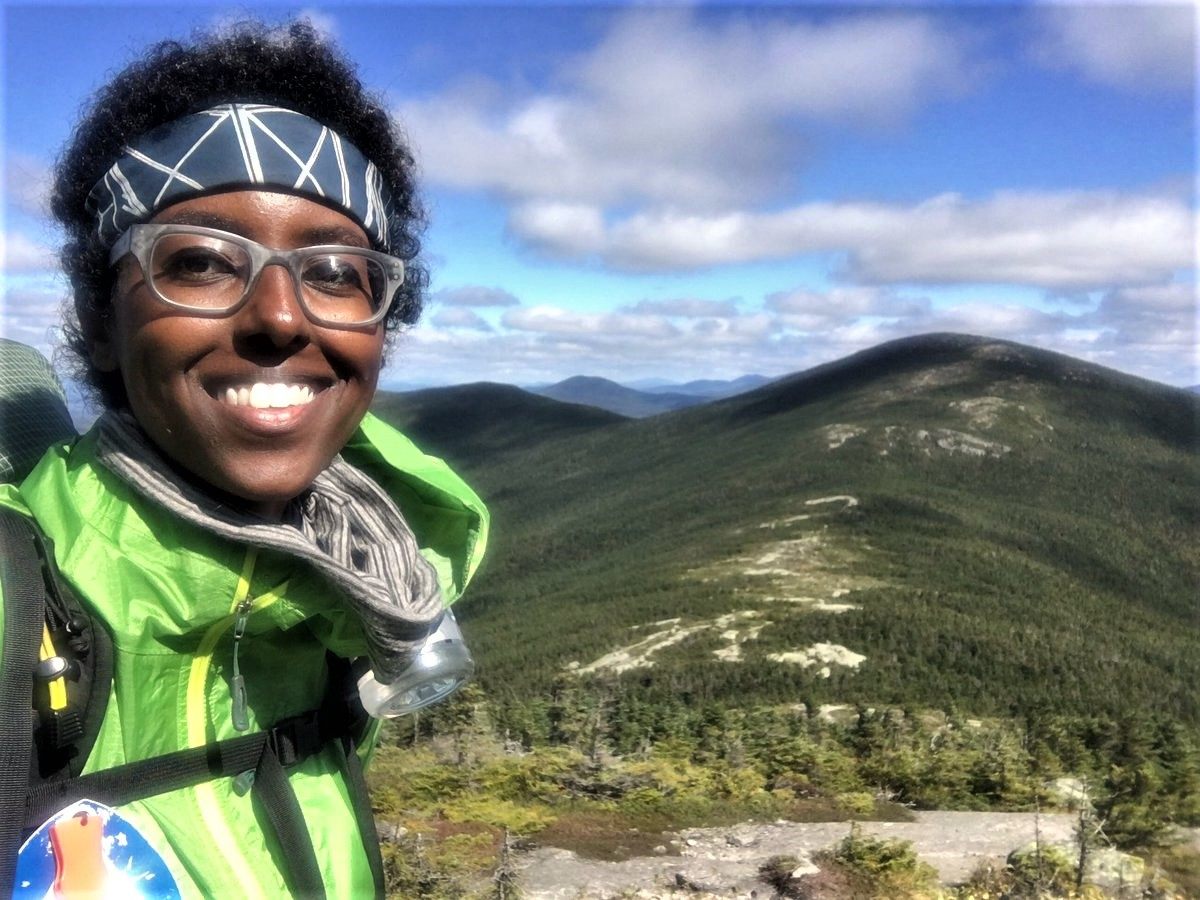
When did you first start thinking about thru-hiking?
The first time I climbed a mountain was when my good friend John Coyne took me to Bear Mountain, outside of New York City. He said, “I know you like being outside, I know you love mountains, and they hold a fascination with you. Would you like to hike with me and my family?” I climbed Bear Mountain, and it was a life-changing experience. There was still snow and ice on the ground that March, and I slipped and fell on my butt many times. It’s an intro climb. There are stairs carved into the mountain. It’s not like I was climbing Mount Washington. We were standing on the mountain, and John said, “This is the Appalachian Trail. These are the white blazes.” I thought, these marks go from Georgia to Maine, and that’s incredible. And I thought, maybe I could hike this trail one day.
I had a dull real estate-adjacent day job that didn’t pay me well. I was depressed and trying to write on the side. I realized I was the most unencumbered I would be in my entire life. I didn’t have kids or a mortgage. No car payments. I was in decent health. I thought, you either hike the AT at this age—I was 31 when I started my thru-hike—or you wait until you’re 60. You’re not going to get another opportunity. I would meet older people who’d say I wish I had your back, I wish I had your knees. I thought, I still have my back, I still have my knees.
I told a friend from Portland in October of 2014 that this was something I was going to work towards over the next year and a half. That’s when it started. I spent all my free time researching the trail, the gear I’d need. I stopped writing. I started saving up. I barely went out. I barely bought clothes for myself. It wasn’t until a few months ago when I was looking at photos of readings I gave from 2014 and 2015 that I realized all of them have me wearing the same four shirts.
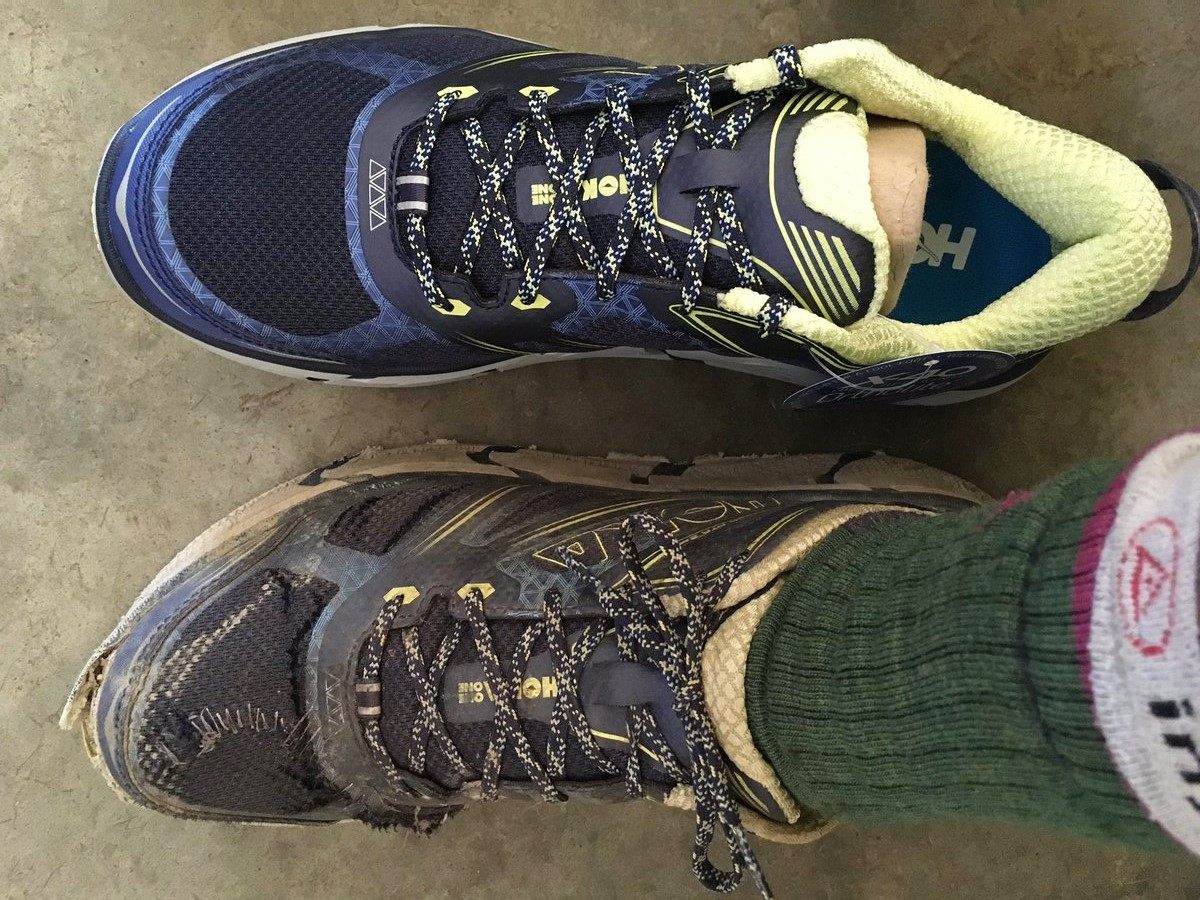
There’s a great deal of privilege that goes into thru-hiking. The idea of broke hikers in the wild, where you don’t have to pay for a place to live and your only expense is food—that’s bullshit. You have to buy your gear. You have to travel. You have to take six months out of your life. You have to find a way to feel safe. That’s one of the reasons the trail look likes it does.
I knew that going into this hike it wouldn’t just be a hike: There’s no movement in America for black women that’s just about movement, especially throughout the South.
At the end of January of 2016, I quit my job. My boyfriend and I had split up. I packed all my belongings. I moved my things into my friend’s basement, handed my cat to another friend, and flew to Oakland, where friends were letting me crash for a month. There’s a ton of hiking in the Bay Area, and it was a good chance to prepare. People think that the thru-hike was the biggest thing I did in 2016, but my relationship ended, I moved out of my apartment on January 31, I quit my job February 1. And then I flew across the country on February 2. Those were three very big days.
When did your attraction to mountains start?
I’ve always been outdoorsy. In Florida, where I’m from, that means the swamp, the Keys, the Everglades, the beaches. I try to explain to people that this was a very important factor toward what gave me the confidence to hike the trail—I never felt that nature was a place where I didn’t belong. I know that, historically and through systemic racism, the outdoors was the purview of wealthy, white men. But, growing up, endless exposure to nature was a huge thing to me.
I started reading thru-hiking blogs online. I spent a good chunk of 2014 and 2015 reading them. That’s where most people know of my affinity for the mountains. I kept tweeting about thru-hiking blogs.
There’s a pretty good series of tweets, it’s threaded from a few years back. I wrote, “Wow, thru-hiker blogs have replaced short story collections for me.” I considered myself a part of literary Twitter at the time and often tweeted about short stories. I wrote them as well. I said, “I have no idea how these people hike the AT.” When I went hiking this year, I responded to the original tweet with “let’s find out.”
That’s the first time I noticed, this matters to me. This is something I can’t stop consuming.
Part of your plan for your hike was to bring books by black authors with you and leave them along the trail. When did you come up with that plan? What inspired it?
In 2015, I started a Twitter project called Short Story of the Day. This was a way to say, “This is the extent that I can participate in literature at this moment.” Diversity matters to me. Many of the most celebrated short story collections are by white men, so on Twitter I published one short story a day by underrepresented groups.
When I thought about 2016—how can I participate in literature this year?—I thought, I want to bring these books places no one likely has. I want to document where black brilliance belongs. There’s so much talk about where the black body belongs. Most of my hike was saying, this is a black body, and it belongs everywhere. These books were a way of me saying, black intellect belongs here, too. I was hoping that by carrying these books and taking them to these incredible vistas, fellow people of color might say, “If those books can go there, so can I.”

I would leave the books at the shelters. I attempted to create a library of black excellence along the Appalachian Trail. That’s why I focused on short story collections, poetry collections, essay collections—something that people can spend a half-hour reading. People would message me and say, “I found this, and I liked it.” Or, “I read this, and it didn’t resonate with me but thank you for leaving this material.”
How did your books compare with other books you found in those shelters?
Leaving a book in a shelter is like leaving trash. I don’t think the books I left will be around longer than this season. Many people just leave books because they don’t want to carry them. People will leave part of the book, and that is considered a dick move. No one is going to enjoy reading chapter 17 of a book they don’t know. Books that are left in shelters are also used as kindling, because it’s hard when it rains all the time on the Appalachian Trail to find dry wood.
Mostly, it was Harry Potter as far as the eye could see. I saw many copies of The Girl on the Train. I saw many, many copies of Bryson’s A Walk in the Woods. I was surprised that I didn’t run across a single copy of Wild. Tennessee has a Bible in almost every shelter. The people who maintain the trail provide them.

What’s interesting to me is that hostels act as libraries. They’re a place where people can leave a book, take a book. In the South, there weren’t that many, but the farther north you went you’d start seeing some Zora Neale Hurston, some Toni Morrison. The best library I saw all trail was in Maine, at a hostel right before the 100 Mile Wilderness. The person who runs it is a former English teacher, and it had a diverse, top-notch library. It was the first time I felt like I wasn’t in the whitest space ever.
I should be clear that the trail itself was the kindest and most generous white space imaginable in America. I have nothing but good things to say about the thru-hiking community. It’s incredibly warm. I don’t know if I’ll ever experience something like that again.
Maybe this is a good time ask you about that. You found the hiking community so warm, as you’re saying, but you also posted on Twitter this one picture of you and a couple of other black hikers with a comment about the intense conversation you’d had with them.
That photo I took—there’s a Confederate flag at that hostel. We had just finished talking about how we were spending our money at a hostel that flew a Confederate flag. The men I was talking to, they tried to get hitches into town—you hitch into town to resupply or take a night off—and they’d be hanging out with their friends, three white guys and a black guy. And people would stop and would say, “We’ll take those three, but we won’t let you in our car.”

There are two sides to the trail. There’s hiking the trail, but there’s also having to go into trail towns. You need food, you need to do that laundry. It’s not the trail that’s the problem with the trail. It’s what it’s like to be bothered in places that don’t expect to see you.
People were kind. Some people said, “I don’t see many people of color hiking, and it’s great that you’re hiking, and I hope that’s okay for me to say.” One hostel owner in Virginia was incredible. His name is The Captain, and he came up to me and said, “It’s so good to see a black girl hiking.” He said, “I’ve been doing this for years, and I’ve barely seen any people of color—I demand to see a summit photo when you get to Katahdin.”
We haven’t talked about the actual hiking part of your hike yet… how was your hike?
Holy shit, it hurt. It hurt so much. There were several Triple Crowners on the trail. They had hiked the Pacific Crest Trail and the Continental Divide Trail, and they were doing the AT to get their Triple Crown. They were pissed. They were like, you don’t have switchbacks. We come from the land of happy switchbacks. On the East Coast, the trails just go straight up. You frequently have, in New Hampshire and Maine, more than 1,000 feet of elevation gain in less than a mile.
The trail is the steepest at its two ends. Most people go northbound. You show up in Georgia, and you don’t have your trail body, and you’re carrying too much weight. You’re going up and down these incredibly steep mountains. There are people who don’t have a ton of hiking experience. The two groups that seemed to have a huge advantage, at least at the start, were runners, especially marathon runners, and chefs, people who were used to being on their feet 70 hours a week. That was a huge deal.
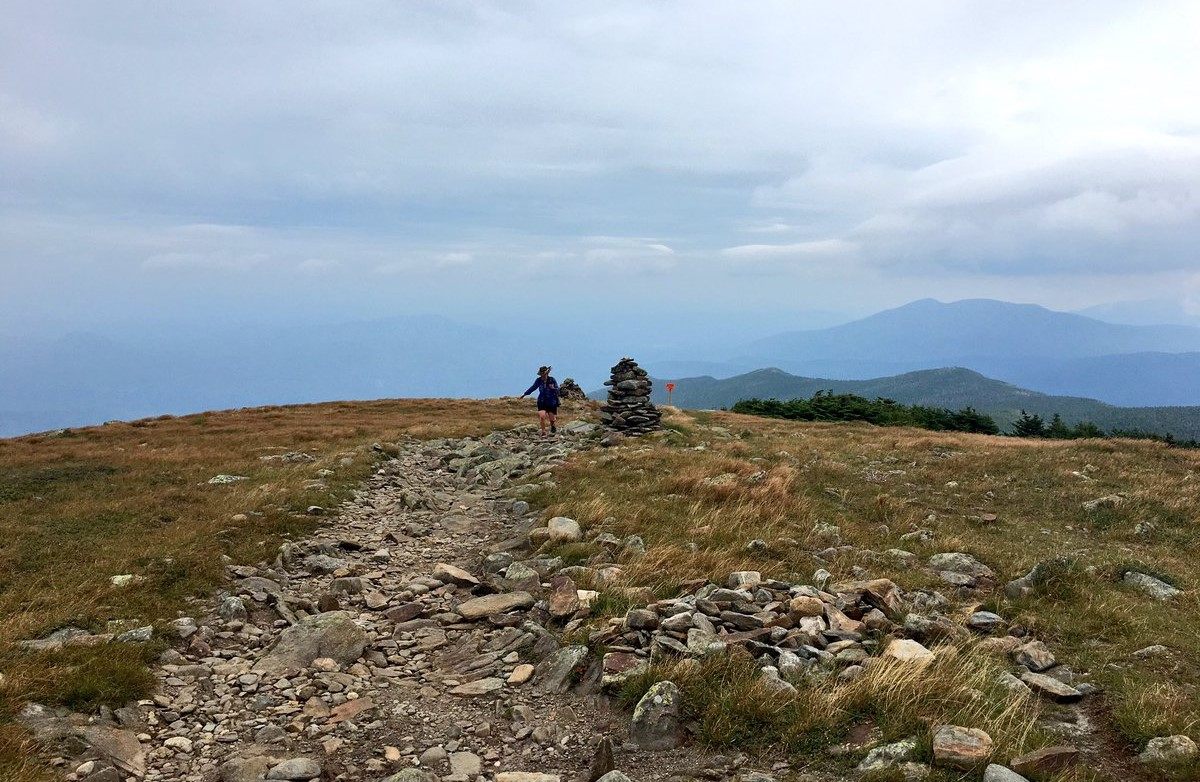
It was difficult. There were sections of trail where it’s just rocks and copperheads and where it doesn’t look like a trail at all. When I finished the trail, I thought, I will never thru-hike again. But recently I started looking up PCT hikes, and when I looked up photos, I was shocked, like, that looks like an actual trail! A guy I hiked with up north does trail maintenance in Colorado, and he said that often the Appalachian Trail follows the fall line, so you just have this crazy jumble of rocks to climb down.
The hardest thing, though—holy shit, climate change. People were like, how were your feet? Why don’t you ask me about hiking in the mid-Atlantic during the hottest July ever recorded? Because there was no water. There was no water anywhere. Fewer people would have finished the hike if there hadn’t been trail angels leaving huge caches of water at road crossings. That’s the only way I made it through Pennsylvania. In Maine you’re supposed to get your feet wet and ford a stream every day. I had to ford one stream during my entire time in the state. That is bad. That is absurd. I feel like I walked through one of the most severe droughts the East Coast has ever seen, and no one is talking about that.
The Appalachian Trail doesn’t have the system of water caches that the PCT does in the desert. I think you’re going to start seeing that appear.
What are some other strong memories, of good days or bad days?
A low day? All of Pennsylvania was a low day. They call it Rocksylvania. Once you leave the town of Duncannon, going north, it’s really hard, and there was no water, and the temperature was in the 100s. Having your feet ache nonstop, being thirsty nonstop, being more sweaty than you thought possible…nothing was worse for me than the monotony of rock… rock… copperhead… rock… rattler… rock.
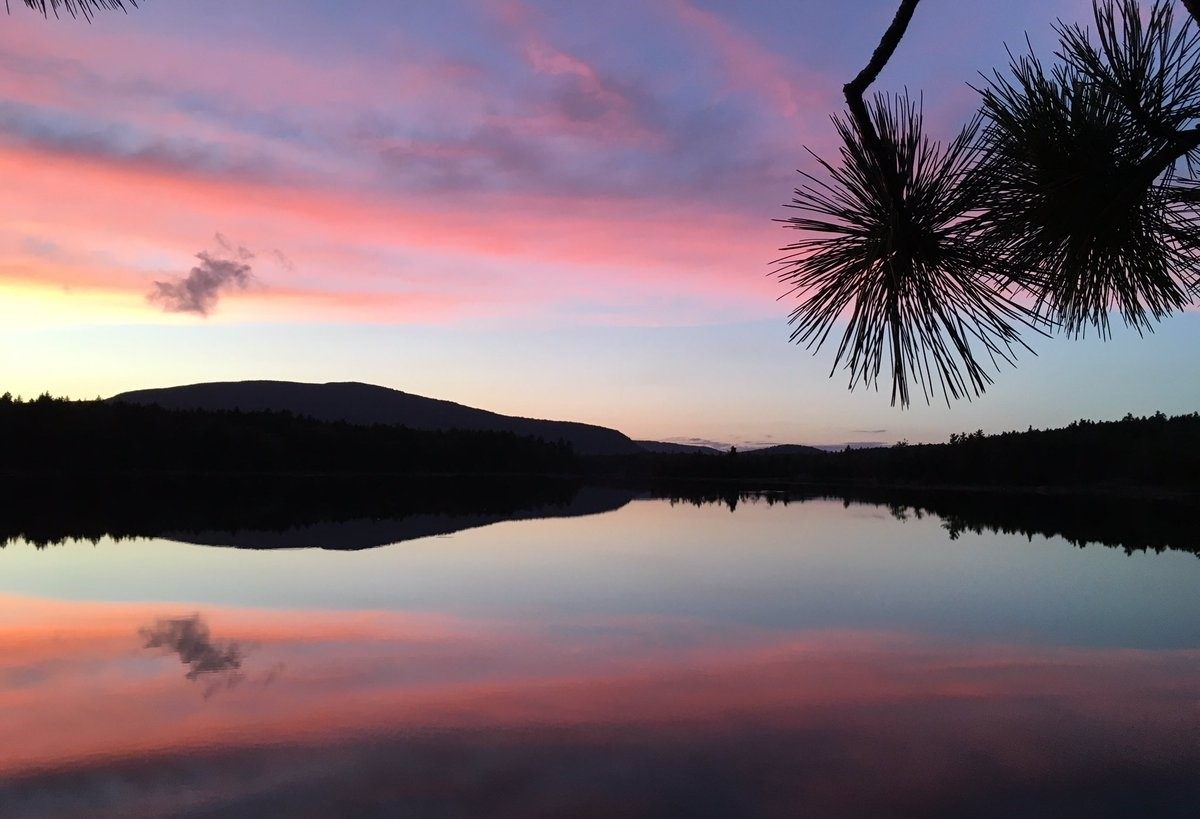
One of my favorite days was in Maine. I was hiking the Saddleback range. I felt so free. It was so beautiful. My body felt so strong. I felt complete freedom. Many people say the White Mountains are their favorite section, and granted, I think the single most beautiful place I hiked was Franconia Ridge in that range. But the Whites are also swarming with tourists. You can drive up to the summit of Mount Washington!
In Maine, there’s hardly anyone. The difference is night and day. It was so freeing. There wasn’t a cloud in the sky. I was above treeline. The state has one of the most racist governors in the country, and I was thinking, I don’t know how many people who look like me have stood here. I felt so lucky that I got to make myself into what I’d become by the time I reached Maine.
I remember holding the flag of Eritrea in front of the northern terminus AT sign, knowing that I’m probably the first Eritrean to thru-hike. So much of the news that comes out about my country is depressing and rightly so. To have this one positive meant a lot to me, and I know it meant a lot to my parents and to other Eritreans.
We talked some earlier about the whiteness of the trail, but what was your experience with its maleness?
Most statistics report the trail is about 75 percent men. This year, there were so many women—I’d be shocked if it was under 33 percent. It was still a very, very masculine space. But I saw so many women. Some of them had hiking partners, but there were also so many solo hikers. I look forward to seeing the Appalachian Trail Conservancy stats for this year. I’d be lying if I said I didn’t think Wild had anything to do with it. There were SO many women. And I didn’t feel the weight of walking as a woman to the same degree as walking as a black person, though both were there.

Talk more about that. How did you feel that weight day to day?
In the day to day, it was fine. Let’s say I’ve left the town, I’m on the trail. You hike, it’s nice, you have nice chats. It’s fine. The day to day wasn’t the weight. The weight was—will I get a hitch into the town? Will the hotel charge me or the person I’m with more, because they’re with me? Will I be followed in the Dollar General? If I stop at the crossing to have a snack, will someone throw trash at me? That happened once.
I was trying to find a thru-hiking blog by a black woman before I started, and I found one. Her name was Chardonnay. She thru-hiked the PCT in 2015 in 4 months. She’s not like a speed hiker. She just put on her pack and walked for 30 miles a day. She started the AT in 2016. I was like, great! One other black woman! She ended up leaving the trail before we could meet in person.
About two weeks ago, I was looking to see if there were any other black women who thru-hiked in 2016 and blogged about it, and I found one. It was called browngirlonthePCT.com. She talked about running into a hiker with a Make American Great Again hat. His trail name was MAGA. I don’t know what I would have done.
Another reason I documented this hike is because there are so few resources for black hikers. If you search on Google, the first result for “black hiker” is a pair of Timberland boots.

You’ve put yourself out there as a resource for people if they need it; what have you been hearing?
I’ve gotten emails and DMs from people saying how inspired they are. I’m at the far end of the hiking spectrum, though. The extreme is people who go into the woods for six months. Most people want to day hike and go on weekend trips. I’ve pointed so many people to Outdoor Afro, Latino Outdoors, and other organizations dedicated to getting people of color outside. I also bristle when people say there are no black people outdoors. What we consider “outdoorsy” is so narrow at the moment. I do hear from people who say, “I want to hike, but I don’t know where to go, I don’t know where it’s safe.”
One of the reasons I did this in 2016 was that I wasn’t so sure I would do it in 2017. If I were planning my thru-hike for this year, I’m not sure I’d go. That’s sad. It’s really, really, really sad. The rule is you don’t talk about politics on the trail, but it’s going to become increasingly hard not to. Especially if you want to talk about diversity or the environment.
Any last thoughts?
There’s already a debate about who the outdoors are for. There are many Americans, especially white Americans, who don’t understand why that question is being asked at all—who say, all are welcome in the national parks, do what I do, go outdoors. Nothing is stopping you. There’s no sense of history whatsoever.
What gets lost in talking about diversity isn’t just [a question of] how can we can get more people of color outdoors. We have to address how we can get white audiences to acknowledge there are barriers and why that matters. I’ve seen so many people who are like, I don’t understand why we’re talking about race, the outdoors are where we go to get away from it all, why does no one ask why there are no white people in the NBA, etc. There needs to be more work focusing on educating individuals about this country’s history.
One of the most the important things I did on the trail was talking to people. Trying to be patient. I shouldn’t have to be a black ambassador, but I also know I got through to a lot of people, and I hope I can get through to more.









Follow us on Twitter to get the latest on the world's hidden wonders.
Like us on Facebook to get the latest on the world's hidden wonders.
Follow us on Twitter Like us on Facebook